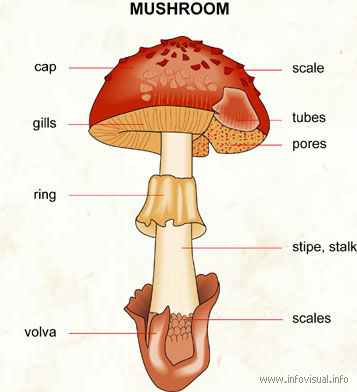FUNGI BY: CARMEN FERNÁNDEZ
Index:
- Classification of fungi
- Types of fungi
- Parts of fungi
- Main characteristics
- Three vital functions
- Fun facts
CLASSIFICATION AND TYPES OF FUNGI
- Yeast
- Mold
- Mushrooms
PARTS OF FUNGI
MAIN CHARACTERISTICS
- Fungi are more close o animals than plants.
- Fungi multiply either asexually, sexally or both.
- Fungi live in the soil and on your body, in your house and on plants and animals, in fresh water and sea water.
- Fungi interact with other organisms by either forming beneficial or mutualistic associations or causing serious infections.

THREE VITAL FUNCTIONS
- Nutrition: Fungi get their nutrition by absorbing organic compounds from the enviroment. Fungi obtain nutrients in three different ways:
1. They decompose dead organic matter.
2. They feed on living hosts as parasites.
3. They live mutualistically with other organisms.
- Interaction: Fungi are very diversified and versatile organisms that are important players in both natural and man-managed ecosystems. According to their main role as decomposers, fungi can establish numerous interactions with other organisms. Some of these interactions may be beneficial for all partners involves,whereas others are detrimental for at least on partner.
- Reproduction: Fungi reproduce by spores. Spores may be produces either by asexual methods or by sexual reproduction.
FUN FACTS
- Fungi are medical miracle workers. For thousands of years fungi have been used in medicine.
- They can be used to make paper and clothing.
- Fungi could save the planet. Fungi already save the planet every day, since without them dead plants wouldn’t be turned back into soil and life on Earth would soon disappear beneath mountains of lifeless debris. It’s already well known that many species of fungus are excellent for bioremediation work—the removal of toxic substances like pesticides from otherwise healthy soil. These chemicals are in widespread use around the world and are massively detrimental to the environment, as well as to global bee populations crucial for natural pollination.

No hay comentarios:
Publicar un comentario